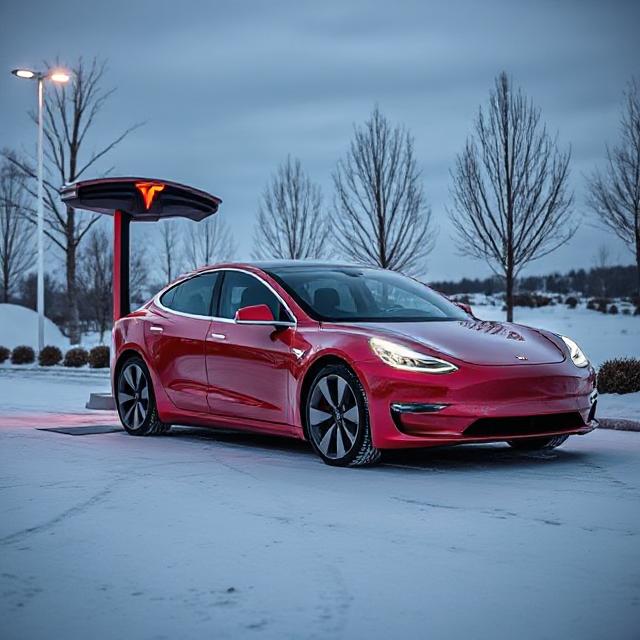Tesla Car Price Comparison Across India, China, and USA: Why Indians Pay Double the Price
Introduction: The Tesla Pricing Paradox
Tesla’s Model Y debuts in India with a starting price of $70,000 compared to $44,990 in the US and $36,700 in China, highlighting a significant pricing disparity that has caught the attention of automotive enthusiasts and industry experts worldwide. This comprehensive analysis examines why Tesla vehicles cost substantially more in India compared to China and the United States, exploring the underlying factors that contribute to this pricing strategy.
The electric vehicle revolution has taken different shapes across global markets, with Tesla leading the charge in premium electric mobility. However, the pricing structure reveals stark differences that reflect each market’s unique economic landscape, regulatory environment, and consumer purchasing power.
Current Tesla Pricing Landscape Across Three Markets
India: The Premium Pricing Strategy
The cheapest Tesla car in India is Model Y, priced at Rs. 58.89 Lakh, representing a significant investment for Indian consumers. This pricing positions Tesla firmly in the luxury segment of the Indian automotive market, competing directly with premium German brands rather than mainstream electric vehicles.
The Indian market presents unique challenges for Tesla’s pricing strategy. With limited local manufacturing and high import duties, Tesla must navigate a complex regulatory environment that significantly impacts final pricing. The company’s approach in India appears to be testing market waters with a premium positioning strategy, targeting affluent consumers who prioritize brand prestige and cutting-edge technology.
China: The Manufacturing Hub Advantage
Tesla’s Model Y starts at 263,500 yuan (about $36,500 at current exchange rates) in China, making it the most affordable market for Tesla vehicles globally. This pricing advantage stems from Tesla’s significant manufacturing presence in China, where the company has established its Gigafactory Shanghai as a production hub for both domestic and international markets.
The Chinese market benefits from Tesla’s local manufacturing capabilities, reduced shipping costs, and favorable government policies supporting electric vehicle adoption. The new Model Y Long Range launched in January in China ahead of Europe and US markets for 303,500 yuan (41,950 USD), demonstrating Tesla’s prioritization of the Chinese market in product launches and competitive pricing.
USA: The Home Market Balance
Tesla’s pricing in the United States reflects a balanced approach between accessibility and profitability. The Model Y starts at $44,990 in the US, positioning it as a premium but accessible electric vehicle option for American consumers. This pricing strategy aligns with Tesla’s goal of accelerating sustainable transportation adoption while maintaining healthy profit margins.
The American market serves as Tesla’s primary revenue generator and testing ground for new technologies and features. The pricing structure reflects the company’s understanding of American consumer behavior, competition from traditional automakers, and the need to maintain market leadership in the electric vehicle segment.
Factors Behind the Pricing Disparity
Import Duties and Tariffs
The most significant factor contributing to Tesla’s high pricing in India is the country’s import duty structure. Electric vehicles imported as completely built units face substantial tariffs, significantly increasing the final consumer price. This regulatory framework is designed to encourage local manufacturing and protect domestic automotive industries.
In contrast, China’s manufacturing-friendly policies and Tesla’s local production capabilities eliminate these import-related costs. The Chinese government’s support for electric vehicle adoption through subsidies and reduced tariffs creates a more favorable pricing environment for Tesla and other EV manufacturers.
Manufacturing and Logistics Costs
Tesla’s manufacturing strategy plays a crucial role in determining regional pricing. The company’s Gigafactory Shanghai serves as a cost-effective production hub, benefiting from China’s established manufacturing ecosystem, skilled workforce, and efficient supply chain networks. This manufacturing advantage translates directly into competitive pricing for Chinese consumers.
For the Indian market, Tesla currently relies on imports from China, adding shipping costs, insurance, and various handling charges to the final price. The absence of local manufacturing facilities means Indian consumers bear the additional burden of international logistics and associated costs.
Market Positioning and Competition
Tesla’s pricing strategy in each market reflects its competitive positioning and target audience. In India, the company positions itself as a luxury brand competing with premium German automakers rather than mainstream electric vehicles. This strategy allows Tesla to maintain high profit margins while building brand prestige in a price-sensitive market.
The Chinese market presents intense competition from domestic electric vehicle manufacturers like BYD, Nio, and Xiaomi. Tesla was offering record discounts on both the Model 3 and Model Y in China, with 0% financing, equivalent to a $2,000 to $4,000 discount per car, indicating the competitive pressure the company faces in maintaining market share.
Currency Exchange and Economic Factors
Currency fluctuations and economic conditions significantly impact Tesla’s pricing strategy across different markets. The strength of the Indian rupee against the US dollar affects import costs, while China’s stable currency environment and large-scale manufacturing provide cost predictability.
Economic factors such as inflation rates, interest rates, and consumer purchasing power influence Tesla’s pricing decisions. The company must balance global pricing consistency with local market conditions and consumer affordability.
Market Implications and Consumer Impact
Indian Market Response
In 2024, just over 100,000 EVs were sold in the country, representing less than 3% of total car sales, indicating the nascent stage of India’s electric vehicle market. Tesla’s premium pricing strategy targets early adopters and affluent consumers who view electric vehicles as status symbols rather than practical transportation solutions.
The high pricing may limit Tesla’s immediate market penetration but could establish the brand as a premium player in India’s evolving electric vehicle landscape. As the market matures and local manufacturing becomes feasible, Tesla may adjust its pricing strategy to capture broader market segments.
Chinese Market Dynamics
Tesla sales are 7.8% lower 2025 in China so far this year compared to the same period in 2024, reflecting increased competition from domestic manufacturers and changing consumer preferences. The competitive pricing in China has made Tesla vehicles more accessible to middle-class consumers, driving significant market adoption.
However, the intense competition requires Tesla to continuously innovate and offer competitive pricing to maintain market share. The company’s ability to leverage its Chinese manufacturing capabilities while facing local competition will determine its long-term success in this crucial market.
American Market Stability
The US market represents Tesla’s most stable pricing environment, with consistent demand and brand loyalty supporting the company’s pricing strategy. American consumers demonstrate willingness to pay premium prices for Tesla’s technology and brand prestige, providing the company with sustainable revenue streams.
The balanced pricing approach in the US market allows Tesla to invest in research and development while maintaining profitability. This stability supports the company’s global expansion efforts and technological advancement initiatives.
Future Outlook and Strategic Considerations
Potential for Local Manufacturing in India
Tesla’s long-term success in India may depend on establishing local manufacturing capabilities to reduce costs and improve pricing competitiveness. The Indian government’s production-linked incentive schemes and infrastructure development initiatives could support Tesla’s manufacturing ambitions.
Local manufacturing would significantly reduce import duties, shipping costs, and currency exchange risks, enabling Tesla to offer more competitive pricing. This strategy could transform Tesla from a luxury brand to a mainstream electric vehicle option in India.
Technology and Innovation Impact
Technological advancements in battery technology, manufacturing processes, and supply chain optimization could reduce Tesla’s production costs globally. These improvements may eventually translate into more competitive pricing across all markets, including India.
The company’s focus on vertical integration and manufacturing efficiency could provide cost advantages that support more aggressive pricing strategies in emerging markets like India.
Government Policy Influence
Government policies regarding electric vehicle adoption, import duties, and manufacturing incentives will significantly influence Tesla’s pricing strategy. Changes in India’s import duty structure or introduction of electric vehicle subsidies could make Tesla vehicles more affordable for Indian consumers.
Similarly, any changes in Chinese or American trade policies could impact Tesla’s manufacturing costs and pricing decisions across global markets.
Conclusion: Understanding the Global Pricing Strategy
Tesla’s pricing disparities across India, China, and the USA reflect complex interactions between manufacturing costs, regulatory environments, market competition, and consumer behavior. The significant price difference—with Indian consumers paying nearly double compared to Chinese buyers—highlights the challenges of global automotive pricing in diverse economic environments.
The company’s success in each market depends on its ability to balance profitability with accessibility while adapting to local conditions and consumer preferences. As Tesla continues expanding globally, its pricing strategy will evolve to reflect changing market dynamics, technological improvements, and regulatory developments.
For Indian consumers, the current pricing represents Tesla’s premium positioning strategy, but future developments in local manufacturing, government policies, and market competition could lead to more competitive pricing. The electric vehicle revolution is just beginning, and Tesla’s pricing strategy will play a crucial role in determining its success across these diverse and dynamic markets.
The journey toward sustainable transportation requires balancing innovation, accessibility, and profitability—a challenge that Tesla continues to navigate as it expands its global footprint and works toward its mission of accelerating the world’s transition to sustainable energy.









